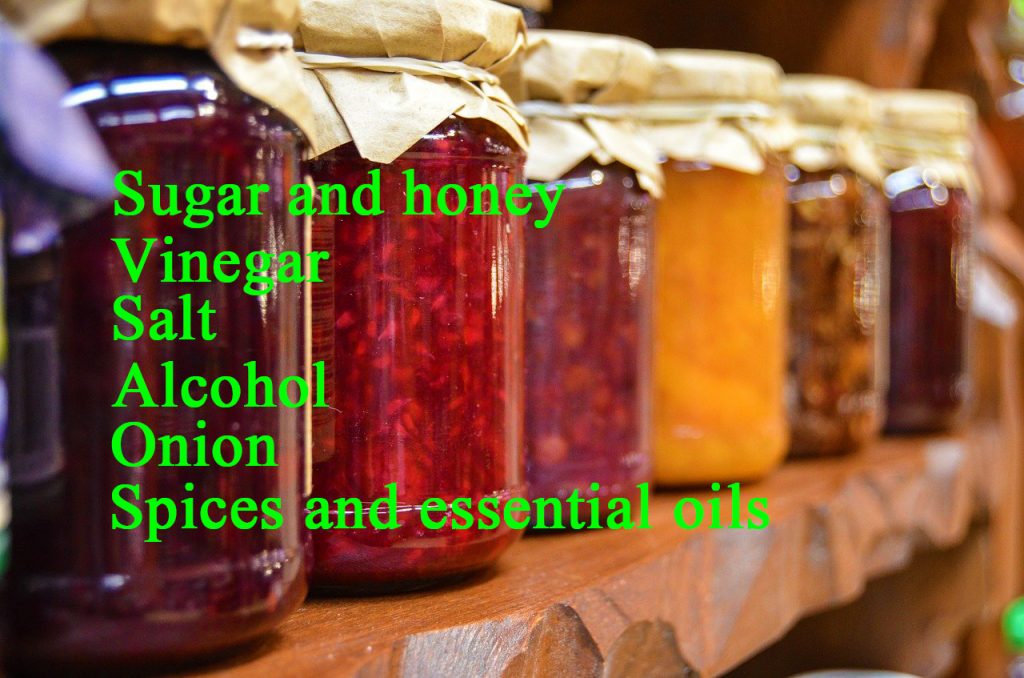
What are Food preservatives: types, use, benefits, and adverse effects
People must be aware of what are food preservatives so that they can make use of them very effectively without harming themselves.
What are food preservatives?
Food preservatives are natural or artificial substances capable of preventing microbial spoilage of food and beverages during handling, processing, and storage.
Role of food preservatives
Food preservatives play an important role in,
- prevent the decay of food.
- Prevent the growth of microorganisms.
- Prevent rancidity caused by fat oxidation.
- Inhibit visual deterioration of the food.
- Prevent food poisoning caused by toxins produced during decomposition.
- Reduce the cost of food.
- Improve consumer convenience.
- Increase shelf life.
- Reduce wastage of food.
- Modify food recipes without compromising safety.
Natural food preservatives

Several natural substances are widely used as preservatives.
- Vinegar
- Salt
- Sugar and honey
- Alcohol
- Onion
- Spices and essential oils
Vinegar
Vinegar is produced by fermentation of sugar in a water solution. It is mildly acidic due to the presence of acetic acid. Therefore it acts as an effective natural food preservative by forming a low pH within the food. Most of the microorganisms need neutral to alkaline pH for their survival. The acetic acid in vinegar creates an acidic environment that inhibits microbial growth and survival.
Adding vinegar also helps to enhance the taste and texture of your food. The process of preservation of food using vinegar is commonly called pickling. Foods such as vegetables, meat, fish, and some fruits are preserved using vinegar.
Salt
Salt is an essential natural food preservative that is widely available. Several properties in salt are important for use it as a preservative.
- Salt is capable of drawing water out of the food by osmosis and dehydrates it. Hence the water required for microorganisms’ survival is diminished.
- Highly concentrated salt solution disturbs water pressure within the microbial cells and destroys them.
- Protect food from bacteria, yeast, and molds.
- Chloride ions are harmful to microorganisms in food.
- Reduce the solubility of oxygen in the moisture that is essential for the metabolic activities of microorganisms.
Sugar and honey
Sugar is a widely available and more economical food ingredient. Like salt, sugar uses the same process of osmosis, where it draws up all the moisture from the food being preserved. Sugars Provide a dehydrated environment that inhibits microbial growth and survival. It also helps to increase the taste or the flavor of the food.
Onion
Onion is a quite popular natural food preservative. It contains antioxidants and antimicrobial properties. Also, onions are used as a natural alternative to artificial preservatives additive used in the food industry.
Spices
Cinnamon, pepper, nutmeg, cloves, ginger, bay leaves, and coriander are some of the spices used as natural food preservatives.
Artificial food preservatives
Artificial preservatives are chemical substances added to food and beverages to prevent decomposition by microbial growth or unfavorable chemical changes.
These chemicals mainly present in four categories.
Antioxidants
Prevent oxidation of fats, oil pigments, and flavors.
Anti-browning
Prevent enzymatic or non-enzymatic Browning.
Antimicrobial
Prevent or arrest the growth of microbes in food.
Anti staling
Prevent textural changes in bakery products.
Examples of artificial food preservatives are,
- Benzoic acid
- Sorbic acid
- Propionic acid
- Sulfur dioxide
- Nitrates
- Lactic acid
- Acid phosphate
- Food antibiotics: Nisin

Benzoic acid
- Natural ester in many plants and animals
- Antimicrobial agent for a large number of foods
- More active at low Ph (2.5 – 4.0 )
- Benzoic acid is used to preserve soft drinks, sources, salad dressings, margarine, and pickles.
Sorbic acid
- Effective against molds, yeast, and some bacteria.
- More effective in acidic media (pH 4-6).
- Use for cakes, fillings for chocolates and cheese spreads, meat, fish, other bakery products, fruit. Juices, beverages, and salad dressings.
Propionates
- It has fungistatic and fungicidal actions.
- Inhibit the growth of fungi and kill fungal pathogens.
- No inhibition of most yeast and bacteria.
- Good for bakery dough.
- Bread cakes and cheese.
Propionic acid, benzoic acid, and sorbic acid can directly use as chemical preservatives.
Sulfur dioxide and sulfites
- Inhibit bacteria than yeasts and molds.
- Antimicrobial and antioxidant activity.
- Used for fruit and vegetable dehydration.
- Used for the preservation of pork.
Nitrates and nitrites
- Stabilize red meat color.
- Flavour development.
- Inhibit spoilage and food poisoning by Clostridium botulinum bacteria.
Harmful effects of food preservatives
Harmful food preservatives have been accused of several health hazards.
Cardiac diseases
Diseases in the cardiovascular system have become quite common. The presence of preservatives on food items is one of the leading causes of increasing heart problems. studies suggest that food preservatives can weaken your heart tissues and residuals of the preservatives increase the chances of heart damage.
Respiratory problems
Preservatives such as aspartame, sulfites, and benzoates increase the chance of breathing problems and asthma.
Cancer
preservatives on food items are capable of transform into carcinogen agents. Chemicals such as nitrosamine consist of nitrites and nitrates, mix with gastric juice, and form cancer-causing agents. Consumption of snacks and meals that are rich in nitrates and nitrites should be avoided to prevent cancers.